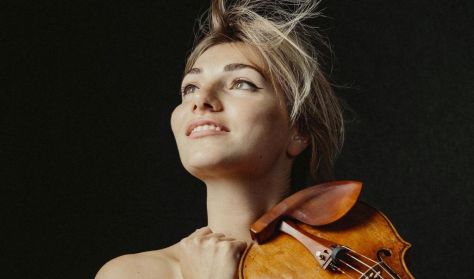
Bridging Europe
The Bridging Europe will connect the entire continent this year: a Hungarian rhapsody follows a Spanish dance; an homage to Bach precedes Czech melodies. more

The Bridging Europe will connect the entire continent this year: a Hungarian rhapsody follows a Spanish dance; an homage to Bach precedes Czech melodies. more
Manuel de Falla: Spanish Dance No. 1 from the opera La vida breve (Life Is Short), G. 35/39
Franz Liszt: Hungarian Rhapsody No. 4 in D minor (transcript by Franz Liszt and Franz Doppler), S. 359/4
Iván Fischer: Dance Suite for Violin and Orchestra, in memoriam J. S. Bach (premiere in Hungary)
Antonín Dvořák: Symphony No. 7 in D minor, Op. 70
Jenő Lisztes (cimbalom)
Julia Fischer (violin)
European Union Youth Orchestra
conductor: Iván Fischer
Liszt’s work, inspired by the cimbalom, will once again be accompanied by this distinctive instrument of urban Romani music, played by Jenő Lisztes, who has captivated audiences at Carnegie Hall, the Musikverein, and the BBC Proms with the BFO. In Iván Fischer’s Dance Suite, bridges will stretch all the way to Brazil, America, and Argentina. The Stradivarius violin sounds “breathtaking” (The Strad) in the hands of Ukrainian violinist Diana Tishchenko’s hands, and rings with a “distinctive, individual voice” (The Gramophone). The concert, performed jointly with the youth orchestra of the EU, is the inaugural event of the European Orchestra Academy, a brand new initiative run by the two ensembles.
Not finding joy in the zarzuela genre, a folk-like Spanish Singspiel, de Falla turned to composing operas. His piece titled Life Is Short, which is less than an hour long, is brimming with elements of Spanish and Romani folk culture. Even though it is considered an early piece, his easy familiarity with Andalucian music shines through. His enthusiasm for Moorish and transcendental motifs is also apparent. The most
famous movement in the story of Salud, a heartbroken character, is the Spanish dance, in which the clever orchestra arrangement evokes the presence of a flamenco guitarist.
In the mid-19th century, the demand for national music started emerging throughout the world. After painstakingly collecting melodies he believed to be Hungarian folk music (mostly Hungarian inspired songs by Romani musicians), Franz Liszt composed a set of 19 Hungarian rhapsodies: his most popular series to this day. He revised six compositions originally written for solo piano to be performed by an
orchestra. In the orchestrated rendition of the rhapsody honoring Joseph Joachim, the violin assumes a significant role, while the solo flute introduces the most recognizable melody of the piece. Drama, lyricism, and dance take turns, as is fitting for the genre.
A collection of stylized dances — that was the brief description of the suite. In other words, dance numbers that nobody dances to anymore because they have fallen out of fashion. But when the suites were first performed during Bach’s time, the elderly may have still remembered the dances, and may have felt nostalgic. This was Iván Fischer’s thought process when he composed his own suite of dances, whose melodies may sound similarly familiar to the contemporary audience. A Baroque prelude, a samba-like bossa nova, syncopating ragtime, slithering tango, and swing-based boogie-woogie constitute the modern parody of this Bachian form.
Many say Symphony No. 7 is Dvořák’s finest piece of music. After hearing Brahms’ Symphony No. 3, the composer decided to return to the genre following a hiatus of five years. “‘There is not a single superfluous note in the work,” he wrote to his publisher. The piece simultaneously features heated Czech political passions and the composer’s peaceful, harmonious love for his homeland. The unexpectedly quiet and lyrical opening of the first movement came to the composer at a train station in Prague: the slow movement represents Dvořák grieving for his mother, who had recently died, and for his eldest daughter, who passed away at a young age. After the vivacious yet melancholy scherzo, the piece concludes with an exotic finale.
A joint concert by the Budapest Festival Orchestra and the European Union Youth Orchestra, a joint event by Müpa Budapest and the BFO.
item(s) in basket
total:
Time limit has expired. Please, put item(s) in to basket again.